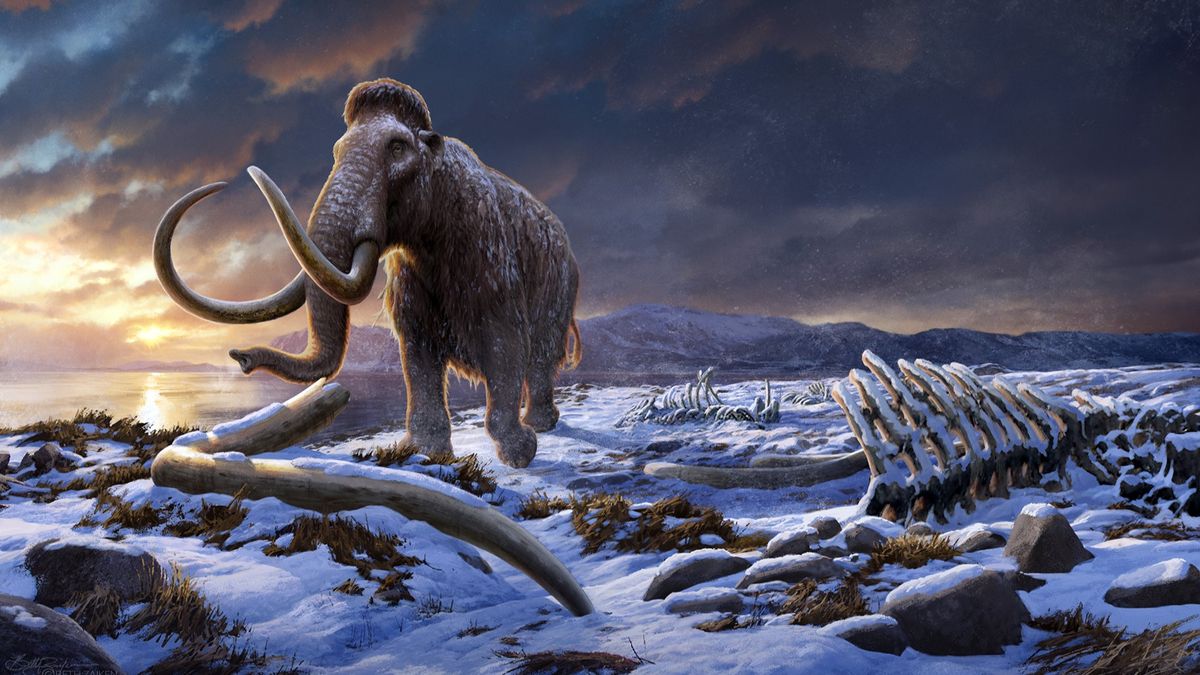The planet’s last surviving mammoth population was killed off by a random and sudden mysterious event, a new study has found.
The population, which was isolated from the rest of the world for 6,000 years on Wrangel Island in present-day far northern Russia, was previously believed slowly exterminated by genetic inbreeding.
But a new study has found that the population — which grew from a maximum of eight individuals to 300 before it went extinct 4,000 years ago — did not die out for genetic reasons, leaving an even greater mystery about what actually happened. The researchers published their findings June 27 in the journal Cell.
“We can now confidently reject the idea that the population was simply too small and that they were doomed to extinction for genetic reasons,” said lead study author Love Dalén, an evolutionary geneticist at the Center for Paleogenetics in Stockholm, in a statement. declaration. “This means it was probably just a random event that wiped them out, and if that random event hadn’t happened, we would still have mammoths today.”
From about 300,000 to 10,000 years ago, woolly mammoths roamed the icy plains of Europe, Asia and North America. When the ice in these northern areas melted, the Arctic tundra that the giant pachyderms depended on for food disappeared. This reduced the habitat of the mammoths until they eventually disappeared.
But sometime during this period, a small group of mammoths crossed the ice on the northwest coast of Siberia and began to inhabit Wrangel Island. They became cut off from the mainland population when the ice bridge disappeared about 10,000 years ago. Isolated on the frozen island, the mammoths survived for another 6,000 years.
Related: ‘Archaeological sensation’: winemaker discovers hundreds of mammoth bones while renovating his cellar
Because the Wrangel Island mammoths came from a maximum of eight individuals, scientists previously believed that harmful mutations resulting from inbreeding could have caused the animals’ demise.
To investigate the effects of the bottleneck on Wrangel Island, researchers in the new study used DNA extracted from bones and tusks to analyze the genomes of 21 mammoths – 14 from the island and seven from the mainland population before it bottleneck occurred.
They found that while the woolly mammoths on the island showed signs of inbreeding and low genetic diversity, their mutations were only moderately deleterious and the most dangerous mutations were slowly being removed from their genome.
“If an individual has an extremely deleterious mutation, it is basically not viable, so those mutations gradually disappeared from the population over time,” said first author Marianne Dehasque, an evolutionary geneticist at the Center for Paleogenetics, in the declaration. “But on the other hand, we see that the mammoths accumulated mildly damaging mutations almost until they became extinct.”
Now that inbreeding has been ruled out, the real cause of the extinction of these woolly mammoths remains unknown, the researchers said.
“What happened in the end is still a bit of a mystery — we don’t know why they went extinct after being more or less good for 6,000 years, but we think it was something sudden,” Dalén said. “I would say there is still hope to find out why they went extinct, but there are no promises.”
To investigate further, the researchers will look for clues in unearthed mammoth fossils from the last 300 years of the island’s population. In the meantime, the scientists say their findings are useful for understanding the ongoing diversity crisis, as the mammoth’s grim fate is mirrored by many contemporary populations.
“It is important for current conservation programs to keep in mind that it is not enough to get the population back to a decent size,” Dehasque said. “You also have to monitor it actively and genetically, because these genomic effects can last for more than 6,000 years.”
